
Authors: R. Chris Williamson (formerly UW), PJ Liesch, and Vijai Pandian, UW-Madison Extension
Last Revised: 7/19/2024
X-number: XHT1062
The Japanese beetle, Popillia japonica, is a significant pest of landscape trees and shrubs, vegetable and fruit crops, and turfgrass in the eastern United States. The Japanese beetle is native to the Japanese archipelago and was first discovered in the U.S. in southern New Jersey in 1916. The beetle does well in areas with moderate temperatures and precipitation.
Description
Japanese beetle adults are a shiny, metallic-green and slightly less than ½ inch long. They have coppery-brown wing covers (elytra) that rest on their backs. At the edges of their backs are small patches of white hairs. Males and females look similar, but females tend to be slightly larger. Newly hatched larvae (white grubs) are C-shaped, approximately ⅛ inch long with pale bodies; mature grubs are up to one inch long. Japanese beetle larvae are similar to those of other white grub species such as May/June beetles, European chafers, and Northern masked chafers.
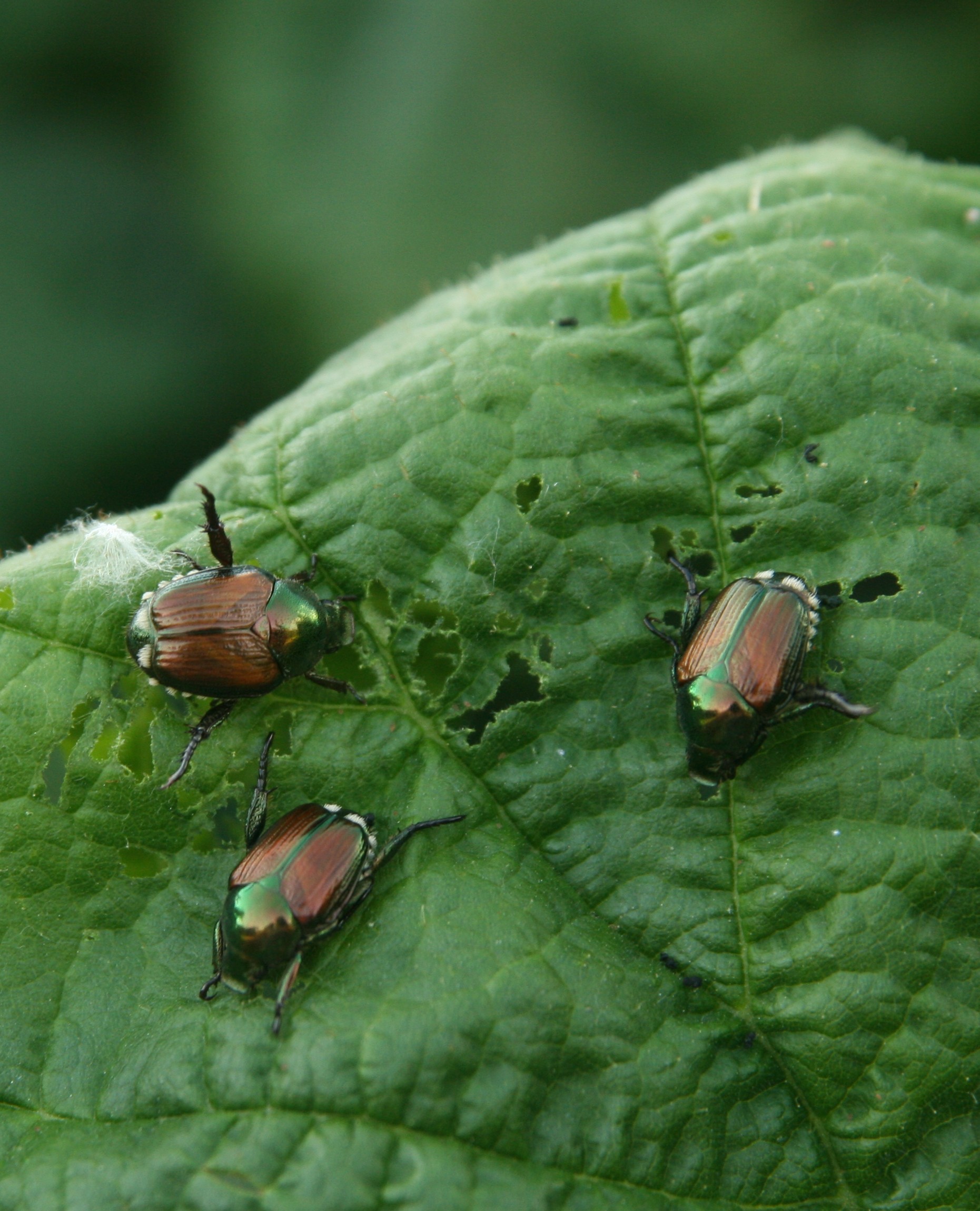
Plants Attacked and Damage
Japanese beetle adults do not damage turf but feed on leaves and flowers of over 350 species of fruits, vegetables, ornamentals, field and forage crops, and weeds. Norway and Japanese maple, birch, crabapple, purple-leaf plum, rose, mountain ash, linden, grapes, and basil are preferred hosts. Adults feed on the upper surfaces of leaves of most plants, consuming soft tissues between the veins, and leaving a lace-like skeleton. Often, they feed in the upper canopy first. Trees with extensive damage turn brown and drop their leaves.
Japanese beetle grubs feed below ground on the roots of turf and ornamentals. They reduce a plant’s ability to take up enough water and nutrients to withstand hot, dry weather. Initial grub injury in turf leads to localized patches of pale, dying grass, resembling damage from drought stress. As grubs develop and feed further, damaged areas rapidly enlarge and merge to a point where the turf is not well-anchored and can be rolled back like carpet. Additional damage can occur when animals (e.g., skunks, raccoons, crows, etc.) dig into the turf to feed on the grubs.
Life Cycle
Japanese beetles have only one generation per year. Adults typically begin to emerge in late June or early July around 1000 growing degree days, and can be found into September. Adult beetles are most active on warm sunny afternoons. After mating, females burrow two to four inches into the soil in areas with higher soil moisture (e.g., under turf and in mulched areas) to lay small batches of eggs. Eggs hatch after approximately two weeks, and grubs begin feeding on the roots of turfgrass and ornamentals. By fall, grubs are nearly full-grown (approximately one inch long). As soil temperatures begin to drop, grubs move deeper into the soil, typically overwintering six to eight inches (but up to 20 inches) below the surface. They become inactive when soil temperatures fall below 50°F. In the spring, when soil temperatures reach 50°F, the grubs move upwards to the root-zone to resume feeding for several weeks. The grubs eventually stop feeding and create a cavity in the soil where they pupate (i.e., transform) into adults.
Control
Landscape and Garden Plants
Well-established trees and shrubs generally tolerate Japanese beetle damage with little impact on leaf emergence the following season. However, regular, severe defoliation can make some plants more susceptible to other problems. Birch and linden trees that suffer from repeated severe foliage damage can attract borers that can kill the trees. To minimize the stress from defoliation, make sure trees are watered and mulched properly. Also, consider consulting with a certified arborist about other management options for large trees.
Consider protecting smaller plants (e.g., vegetables, herbs, small shrubs and trees) from Japanese beetles by covering them with nylon insect screens from late June to early September. Use a mesh size of ¼ inch or less and be sure to secure the edge of the mesh the ground. On smaller plants, you can hand pick or knock off beetles and put them into a container of soapy water.
There are many insecticides that can protect foliage and flowers from Japanese beetle adults. When selecting an insecticide, consider the potential impact of the product on non-target organisms (e.g., bees and other pollinators, pets and humans). Chlorantraniliprole (the active ingredient in Acelepryn) is a reduced risk insecticide that has minimal impact on non-target organisms. This product is generally available to professional applicators and can be used on trees, shrubs and herbaceous perennials. Bacillus thuringiensis subsp. galleriae or Btg (the active ingredient in beetleGONE!) also has minimal impacts on beneficials and is based on a naturally occurring bacteria. It can be used on a wide range of landscape plants, vegetable and fruit crops and is approved for organic production. Azadirachtin, another organic ingredient, also has low environmental impacts and can be used on landscape plants, vegetables and berry crops. However, these products should be applied in late evening after pollinator activity subsides to minimize risks. Insecticidal soaps and horticultural oils (such as neem oil) have very limited effectiveness against Japanese beetles. The most commonly available products for Japanese beetle adult control contain synthetic compounds in the pyrethroid class of insecticides (e.g., bifenthrin, cyfluthrin, deltamethrin, lambda-cyhalothrin, permethrin, zeta-cypermethrin, etc.). These insecticides typically protect foliage for approximately two weeks. The downside to these insecticides is that they are broad-spectrum products and can kill beneficial insects (e.g., pollinators, predators, etc.). Whatever product you decide to use, follow all label instructions to ensure that you use the product in the safest and most effective manner possible.
Pheromone lure traps are not recommended for Japanese beetle control. These traps capture large numbers of Japanese beetles, but also attract many more adults to the area that are not trapped and that can cause additional damage.
Finally, when landscaping, choose plants that are less favored by Japanese beetles. Arborvitae, black gum, boxwood, clematis, dogwoods, firs, forsythia, fringetree, hemlock, hickory, holly, ironwood, junipers, lilac, magnolia, musclewood, northern red oak, pines, red maple, silver linden, spruces, sweet gum, tulip tree, white oak, yellowwood and yews tend to suffer less feeding damage from Japanese beetles.
Turf
Do not water turf from July to mid-August when Japanese beetles are most active. Drier conditions may discourage females from laying eggs and may also kill newly-laid eggs and young larvae. If you decide to use insecticides for control, consult White Grub Control in Turfgrass for information on products that you can use and proper timings of applications. Many grub control products can pose risks to bees and other pollinators. See Conservation of Native and Domestic Pollinators in Managed Turfgrass Landscapes for guidance on protecting pollinators in turfgrass areas. Note that controlling grubs in a lawn will not prevent damage from adult Japanese beetles in the future, as adults can fly in from nearby areas.
Factsheet
Webinar Recording
▶ WATCH: Japanese Beetle in Wisconsin
Japanese beetle is a destructive insect pest throughout areas of Wisconsin, and typically becomes active in July. Join PJ Liesch as he shares with you information about the insect and how to control it. This one hour and twenty minute recording will give you almost everything you need to know about this pest.
Additional Images

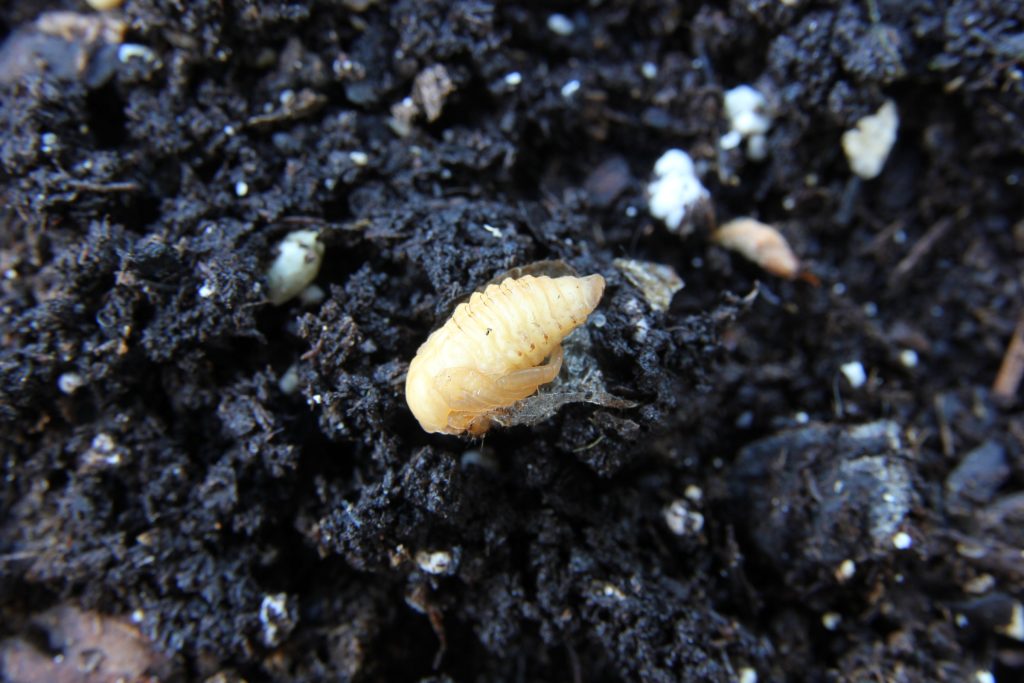
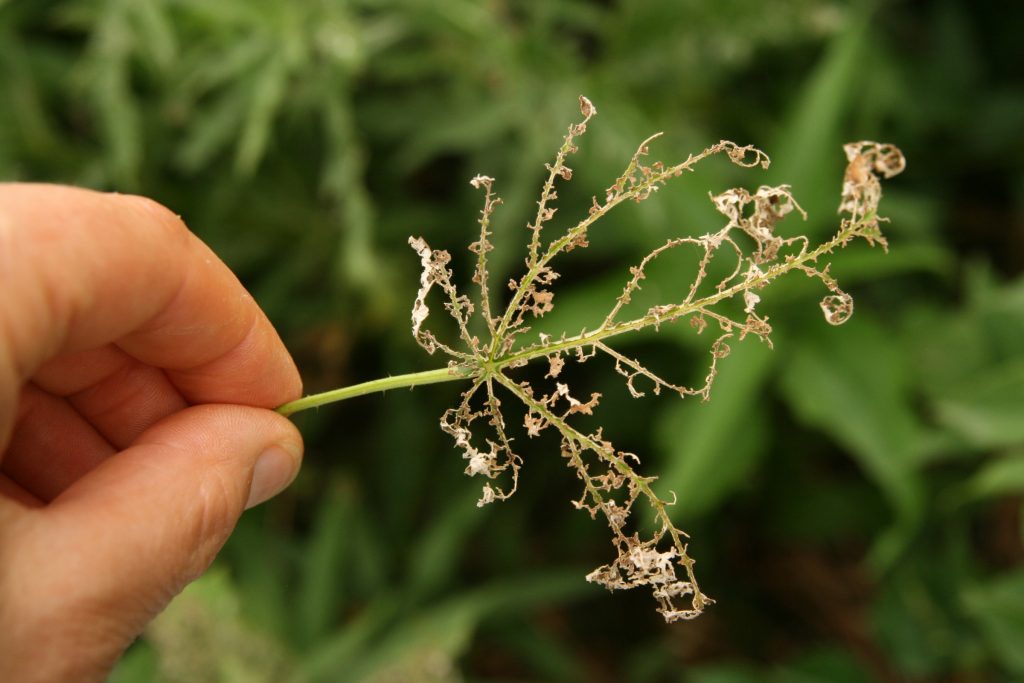
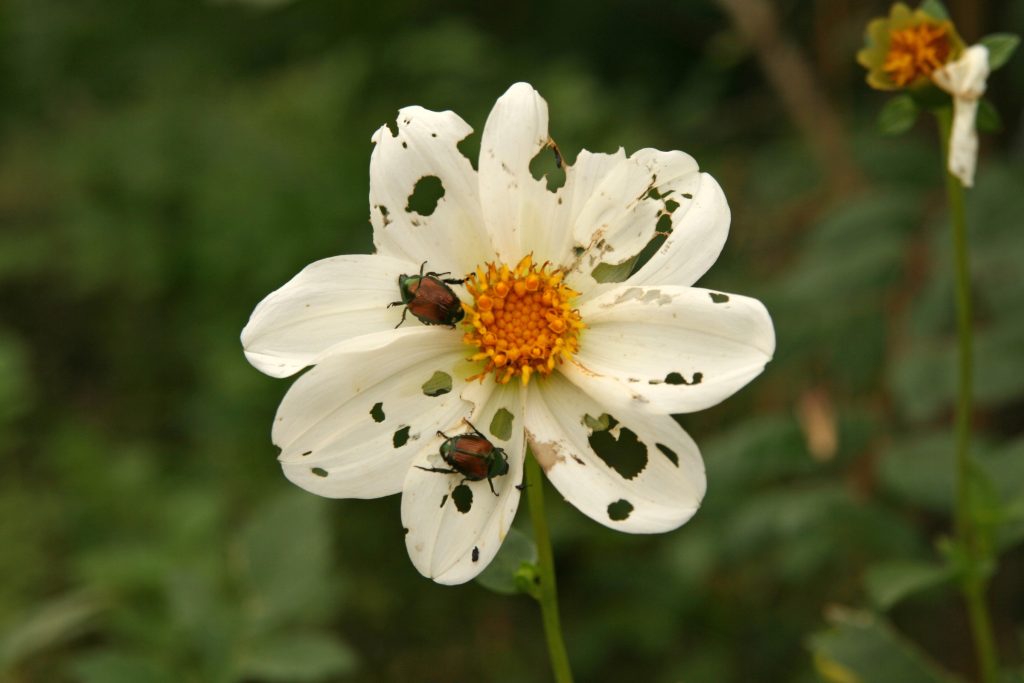
Download Article





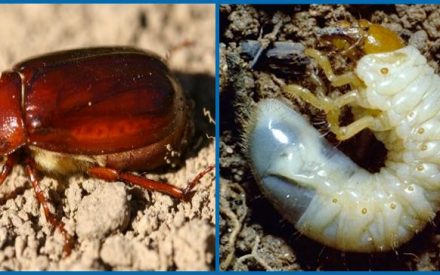 May/June Beetles
May/June Beetles White Grub Control in Turfgrass
White Grub Control in Turfgrass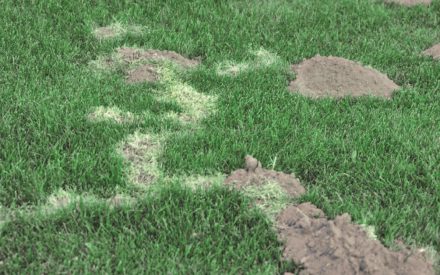 Mole Ecology and Damage Management
Mole Ecology and Damage Management White Grubs on Christmas Trees
White Grubs on Christmas Trees


